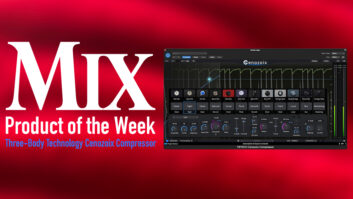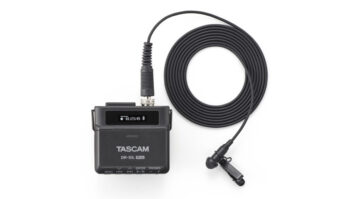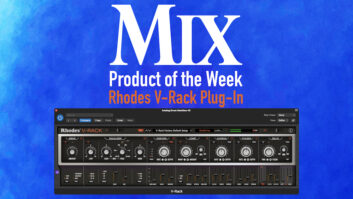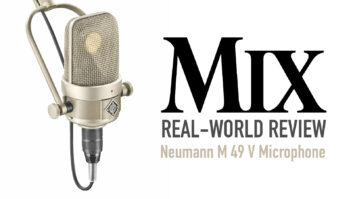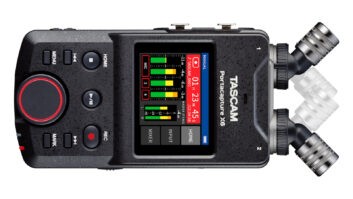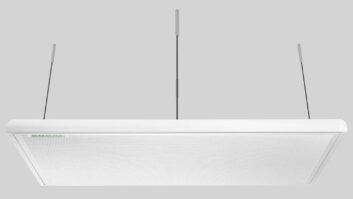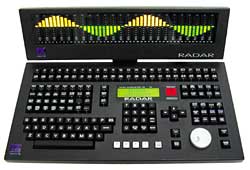
The RADAR system has always been renowned for its simplicity, solid performance and sound. iZ Technology has upped the ante with the RADAR V line, offering the latest Adrenaline Plus engine, which is capable of simultaneously recording 24 tracks of 24-bit, 192kHz audio. Other features include dual-disk recording onto SCSI, IDE or SATA (Serial ATA) drives, a File Flatten menu that improves session consolidation and Gigabit Ethernet connectivity, and operation in Native Broadcast WAV format (BWAV), facilitating integration with other systems. My review unit was the flagship RADAR V S-Nyquist, operating up to 192kHz/24-bit.
Digital sync reference (word clock) is via BNC connectors (In/Out/Thru) accepting word clock or video sync. RADAR can also clock off of any of its digital inputs (AES/EBU, S/PDIF, ADAT optical) and LTC or MTC inputs. Positional reference is read and generated via two XLR SMPTE connections or MTC (MIDI In/Out/Thru), with all industry frame rates supported. All RADAR V machines have a Session Controller capable of managing 48 RADAR tracks, as well as a 24-track meter bridge with an optional 48-track meter bridge available.
The S-Nyquist review unit shipped with a 120GB internal drive and two 73GB SATA drives on carriages. A new Adrenaline Plus card supercharged with the company’s Trinity chip enables a Dual Disk mode, where audio can be recorded to both drives simultaneously, or a Span mode, which allows audio to spill over to the next recording drive when the current one is full. This will definitely prove beneficial during a live recording. A DVD-RAM/CD/DVD-R combo drive was provided for backup purposes; for bigger archival, a 35GB REV cartridge drive was included. RADAR can also tackle the data-transferring process to a Mac or PC with its Flatten Project capabilities and new Gigabit Ethernet connectivity. Flatten Project consolidates all project punches and audio files into continuous files. Once a project is flattened, the drive and audio files can be mounted on a PC or Mac.
RADAR IN SESSION
The RADAR V was integrated into a room with an SSL 4000E, a Studer 827A and, conveniently, another RADAR (Classic II). After an easy installation (all cables from the Classic were compatible), RADAR was launched into a tracking session at 192 kHz. It recorded eight minutes of audio across 20 tracks be-fore I received error messages and the drive crashed. I ran into the same problem with the second SATA drive. Neither drive would mount after the fact, and two songs were trapped on disk. A phone call to an iZ tech led to the discovery that a ribbon cable had come loose in shipping. In addition, when a user is running a session at 192k, iZ recommends using a 15k rpm SCSI drive. iZ quickly shipped out the 15k rpm drive, and I was able to salvage one of the two songs from the SATA drive. After resetting the cable and mounting the faster drive, RADAR recorded and played back flawlessly.
The first session was recorded at 192k, and during playback, everyone in the room — engineers and musicians — all had the same response: “This thing sounds great!” I experimented with a tune at 96 kHz and could still hear the difference between the two sampling rates. Don’t get me wrong; 96 kHz sounds good — in fact, better than other 96kHz converters I have heard — but not stellar. When comparing the two, 192 kHz sounded like a blanket was lifted off the mix, with a very open top end and more depth. The snare sounded boxy at 96 kHz, and the entire mix suffered in the midrange. At 192 kHz, the low end was much smoother and, again, the top end was just airy; guitars had depth and a great midrange.
Another session was dedicated to comparing my Classic RADAR II and the new S-Nyquist: recording a drum kit to both RADARs simultaneously, locked to SMPTE.
The first test included both RADARs running at 48 kHz. The results were close, but the V had a smoother high end and a tighter-sounding snare. The overall fidelity was better, leading me to believe that iZ has improved the converters from its Otari predecessor. Because RADAR II tops out at 48 kHz, I wanted to hear the difference in the leap to 192 kHz. The results were dramatic. The entire drum kit came to life. The kick was deep and rich, the snare transients were excellent and the cymbals had a very smooth decay. Only on the studio’s Studer 827A have I heard that drummer and his kit sound that good.
SO WHERE DO WE STAND?
Once I got over the drive and ribbon cable problems, it was sonic splendor all the way. As for a full-on editor, I still prefer a traditional DAW, but iZ makes it easy to interface with your Mac or PC with Gigabit Ethernet connectivity, the File Flatten option or export to CD/DVD media. The S-Nyquist’s converters are the best I have experienced on a DAW or recorder. The Session Controller is intuitive and incredibly easy to use.
Prices for the V Series start at $14,995, and an S-Nyquist can reach $19,995. Why invest in a RADAR V S-Nyquist? Sound! Sound! Sound!
iZ Technology, 604/395-7878, www.izcorp.com.
Phoenix-based Tony Nunes is an audio engineer.

